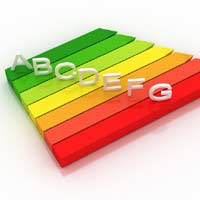
When it comes to energy saving, buying the most efficient products and appliances is now easier than ever. Today, energy rating labels can tell you everything you need to make the right choice – giving you vital information about energy consumption, performance and efficiency.
Certain types of products are required by law to carry an EU energy label – including cookers, dishwashers, fridges, freezers, tumble driers and light bulbs – while others give similar information voluntarily.
It all boils down to a great boost for energy-conscious shoppers – but only once you understand how it all works and fortunately, the good news is that it has been designed to be fairly straightforward.
Energy Efficiency
One of the keys to energy saving is the efficiency of the product. To make the whole comparison process as simple as possible, the EU label scheme uses letters from A to G, with A being the most energy efficient and G the least.
However, for some products the picture is a little more complicated because of their nature. Washing machines, for example, tend to be labelled with not one, but three letters – AAB or ABB, for example.
The first describes the machine’s overall energy efficiency when fully loaded and running a 60 degrees C washing cycle; the second refers to wash performance and the third to the spin drying. Fridges are another exception, with modern appliances routinely scoring so well that two new categories, A+ and A++ , have been introduced to recognise those which offer the greatest energy efficiency.
Further Information
In addition, the EU label often provides a variety of further information, depending on the product – the water consumption and noise of washing machines or the output of light bulbs, for example. However, there are other schemes which can help householders make sense of energy saving.
British heating boilers, for instance use the Seasonal Efficiency of Domestic Boilers in the UK (SEDBUK) labelling system – providing a way to make fair comparisons between different units on the basis of their energy efficiency. Like the EU approach, each model is rated from A to G.
The scheme itself was developed with the active participation of the boiler manufacturers themselves as part of the UK government’s Energy Efficiency Best Practice Programme. A similar voluntary scheme is used by the glazing industry – the British Fenestration Rating Council (BFRC) energy performance label – which ranks the frame and glass of the whole window on its heat retention properties. It also uses an A – G rating system.
The Energy Saving Recommended logo – administered by the Energy Saving Trust – is another thing to look out for, as products bearing this stamp of approval offer the greatest energy efficiency of all. To be awarded this honour, appliances must meet strict energy efficiency criteria – and one of its biggest strengths is that it can be found on a number of products which are not covered by the mandatory EU labels.
The EU also runs a voluntary Eco-label scheme to recognise the efforts of manufacturers to produce particularly environmentally friendly products. Although the energy efficiency criteria are not always as exacting as other labelling approaches, the Eco-label reflects “cradle-to-grave” issues, such as the energy required for manufacturing, use of chemicals, recyclability and disposal.
More Advice
In today’s environmentally aware world, more help and advice on energy efficiency is not particularly hard to find. Unsurprisingly as the authors of the Energy Saving Recommended logo, the Energy Saving Trust is one good source, while Energy Watch – an independent gas and electricity watchdog – can provide excellent impartial advice on a whole range of energy topics. Energy Watch also run Energy Smart – a joint campaign with Ofgem, the official industry regulator – aimed at improving energy saving in the average British home.
For anyone looking to maximise their energy savings and reduce their household carbon footprint, there’s never been a better time to be buying appliances. With so much information and advice on hand, making the right choice could hardly be simpler.




